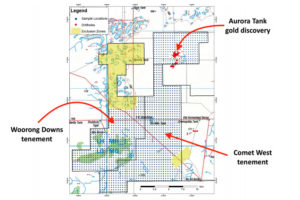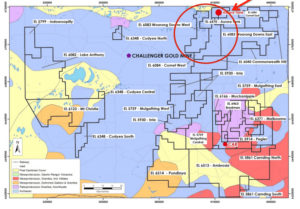Marmota is ramping up its groundbreaking technology that analyses tree leaves to find gold
Mining
Mining
Gold explorer Marmota Limited has carried out extensive sampling in previously unexplored zones extending out from its Aurora Tank gold discovery.
Phase 1 of the sampling program is now complete with samples on the way to the labs for assaying, and is part of Marmota Limited’s (ASX:MEU) comprehensive exploration program for its South Australian gold tenements. The prize would be finding another Aurora Tank gold discovery on adjacent tenements.
The initiative involves the company testing 1,768 sample locations for anomalous gold on a 400m spaced sample grid over an area of approximately 300 sqkm.
“With Marmota repeatedly obtaining outstanding gold intersections at the Aurora Tank gold discovery over multiple programs, it is not surprising that the focus on our attention has been on Aurora Tank,” Chairman, Dr Colin Rose, said.
“That has had the side-effect of ‘holding back’ our exploration program over very attractive ground in surrounding tenements,” he stated. The new Acccelated Discovery Initiative – which is also the Company’s largest sampling program to date – seeks to make up for that.
Very little exploration activity has been carried out at some of the selected tenements including ground around the Challenger gold mine, and adjacent to the Aurora Tank tenement.
The adjacent tenements included Comet West and Woorong Downs which have seen minimal exploration activity before the sampling program carried out by Marmota.
“This is likely the first time that shareholders will have heard of our Comet and Woorong Downs tenements,” said Dr Rose.
“They contain some of the most prospective and least explored ground in Marmota’s tenement package and are situated adjacent to the Aurora Tank discovery,” he said.
South Australia’s government is providing $225,000 of funding to Marmota’s new exploration sampling program in the form of a grant under its Accelerated Discovery Initiative.
Dr Rose said conditions attached to the grant funding meant the company is expediting the sampling program and it has spurred the program into action.

Marmota is employing two different sampling processes in the new sampling program:
traditional calcrete sampling using auger drilling, and biogeochem sampling from tree leaves, and this is the first time both techniques have been used on a regional-scale exploration program.
Calcrete sampling was implemented by the CSIRO and is used to identify gold-in-calcrete near to the surface as an indicator of the presence of below-surface gold mineralisation.
Biogeochemical sampling involves sampling tree leaves to identify new zones of gold intersections which do not have a gold-in-calcrete anomaly, and Marmota’s suucessful use of the technique at Aurora Tank has been featured in both The Economist magazine and New Scientist journal.
This dual sampling approach led to Marmota’s North West Flank discovery at its Aurora Tank gold discovery.
In the case of the North West Flank discovery, there is no gold-in-calcrete anomaly (meaning that traditional techniques missed it), possibly because the gold mineralisation starts deeper from the surface, typically 40m to 60m, but still at depth for tree roots to transport gold particles to the surface.
At the same time that the sampling program is being carried out, Marmota has highlighted that it has a busy schedule ahead at its Aurora Tank gold discovery, both in drilling and new infrastructure towards a planned pathway to production..

This article was developed in collaboration with Marmota Limited, a Stockhead advertiser at the time of publishing.
This article does not constitute financial product advice. You should consider obtaining independent advice before making any financial decisions.